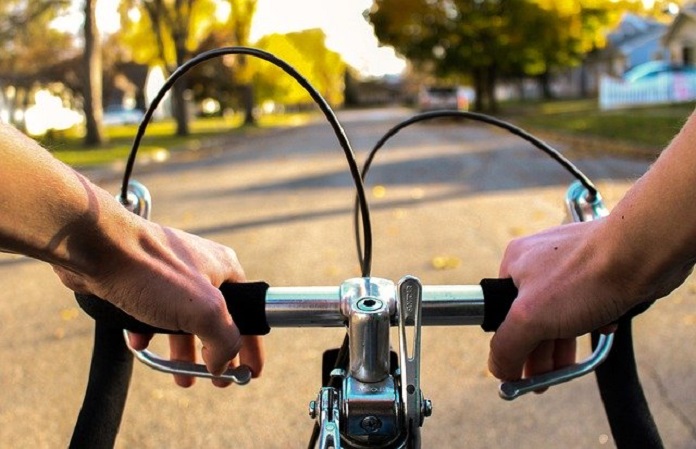Researchers propose a new method of self-competition through virtual reality exergaming to increase the power output and intrinsic motivation of home-based cyclists.
A sedentary lifestyle can have a negative effect on both physical and mental health; it is associated with critical health conditions, obesity, and early death. Moderate physical activity for at least thirty minutes per day is recommended for a healthy and active lifestyle. However, around 30% of adults and 80% of young people fail to meet physical activity guidelines. The main reasons for sedentary behaviour are an absence of intrinsic motivation (doing an activity for its inherent satisfaction) and time constraints. Competing against other players can negatively impact the intrinsic motivation of physically inactive individuals due to feelings of incompetence and low self-esteem. Also, unfit and uncompetitive individuals do not normally experience flow, which is a positive mental state produced by being both fully immersed and finding fulfilment in an activity. Feelings of flow, enjoyment, and achievement are experienced by athletes during a race, highlighting the importance of making exercise intrinsically motivating in order to tackle immobility and sedentary behaviour.
In a recent study published in CHI Conference on Human Factors in Computing Systems, researchers aimed to determine the advantages of self-competition in racing exergames over solitary cycling on player performance and intrinsic motivation.
A longitudinal study was carried out over four weeks by researchers at the REal and Virtual Environments Augmentation Labs (REVEAL) at the University of Bath, UK. They used a novel approach attempting to make the positive racing experience manageable for non-athletes to achieve. Twenty-three participants underwent a High-intensity Interval Training (HIIT) protocol, which involved switching between periods of low- and high-intensity cycling. An immersive virtual environment was created using head-mounted displays (HMDs). All exercycle gameplay sessions were recorded and performance was measured by power output. During the five-minute sprints, players raced against opponents that were a replay or ‘ghost’ of their past performances, allowing an individual fitness journey to be visualised. Additionally, every game introduced a ‘future ghost’, based on the player’sbest physical performance enhanced by 5%. Following each session, participants completed questionnaires assessing flow and intrinsic motivation.
The study found that exergamers get fit twice as fast in a multi-ghost racing experience compared to pedalling alone; power output doubled in participants racing against their own performance history (16%) in comparison to those in a non-competitive exergame (8%). Also, self-competition led to increased heart rates, intrinsic motivation, sensations of flow and perceived competence. This is potentially due to the personalisation of the experience to each player’s fitness skills in the high-intensity virtual reality exergame, making it realistically achievable to win the race and achieve projected future performance goals. Dr Christof Lutteroth, who led the research, stated, “People get a richer racing experience by playing against both their performance history and a model of their future performance. They are motivated to push themselves harder in order to beat all of their ghosts”.
This study, as the first to design a virtual reality bicycle-racing game, is encouraging for individuals who are non-competitive as it offers satisfaction by focusing on self-improvement rather than on the pressures and potential humiliation of competing against others. More innovative methods such as this are necessary to motivate people to exercise regularly and improve the large dropout rates (50%) of many exercise programmes. Dr Lutteroth added, “By making exercise intrinsically more fun and motivating, we’re taking an important step towards tackling the global epidemic of sedentary behaviour”.
Written by Albina Babu, MSc
References:
1. Michael, A. and Lutteroth, C. (2020). Race yourselves: A longitudinal exploration of self-competition between past, present, and future performances in a VR exergame. CHI Conference on Human Factors in Computing Systems.
2. Self-isolating? Get fit faster with multi-ghost racing (May 19, 2020). Retrieved from: https://www.eurekalert.org/pub_releases/2020-05/uob-sgf051920.php
Image by Zienith from Pixabay



